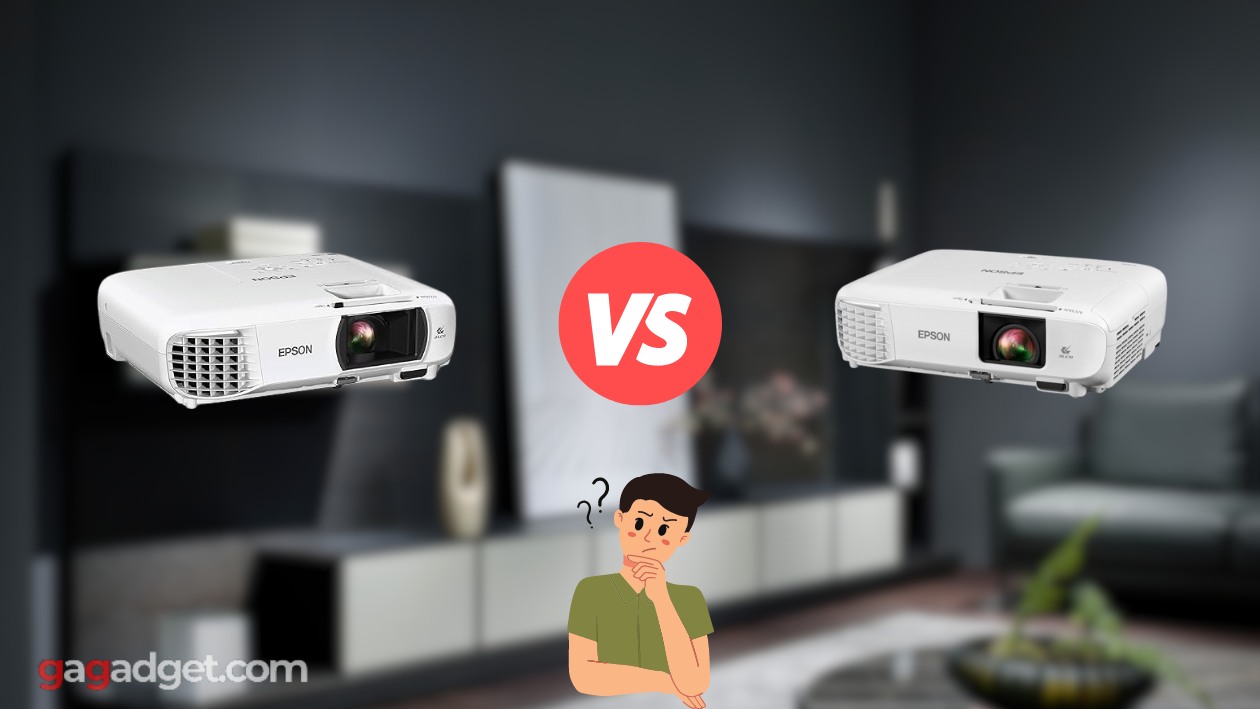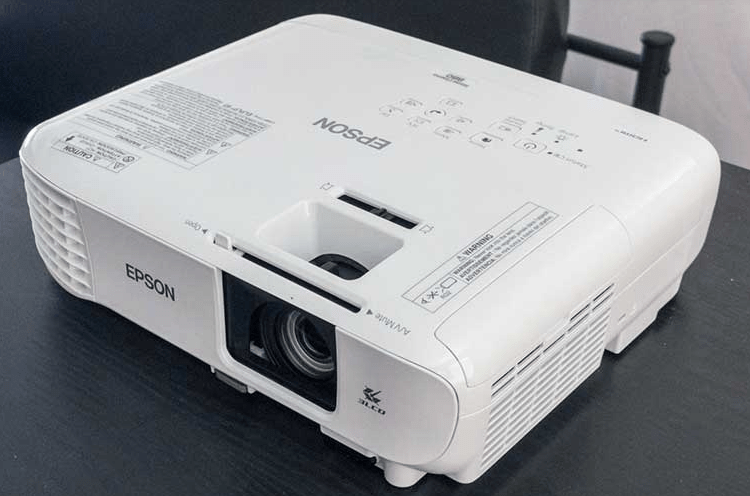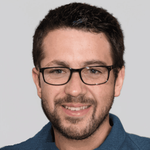At gagadget.com, your trust is our priority. We follow strict quality standards in our research, tests, and analysis of video projectors, to give you the best experience. Learn more
Epson 1060 vs Epson 880: Comparison
Hey everyone, Jim's here. Today, I'm comparing two popular home theater projectors from Epson: the Home Cinema 1060 and the newer Home Cinema 880. Both deliver stunning full HD 1080p images, but there are some key differences in brightness, lens options, and extra features that could make one a better fit for your setup.
I've spent hours testing both projectors in my home theater, evaluating picture quality, ease of use, gaming performance, and overall value. In this in-depth Epson 1060 vs 880 comparison, I'll share my hands-on experience to help you decide which one best fits your needs and budget. Let's dive in!

Epson 1060 vs 880: At a Glance
I respect your time and aim to provide only the essential information, skipping the fluff.
If you're short on time, here's the gist:The Epson 1060 and 880 are very similar home theater projectors overall. Both use 3LCD technology to deliver a bright, colorful full HD 1080p picture up to 300". The 880 is a bit brighter at 3,300 lumens vs the 1060's 3,100 lumens. But the 1060 has a slightly higher dynamic contrast ratio of 15,000:1 compared to the 880's 16,000:1.
The biggest difference is the lens - the 1060 features a 1.2x optical zoom while the 880 has a fixed focal length lens. That gives the 1060 more placement flexibility. But the 880 has a shorter throw ratio, producing a larger image from the same distance. It also adds Miracast screen mirroring that the 1060 lacks.
For most buyers, I recommend the Epson 880. Its higher brightness, shorter throw, and bonus features like Miracast and a quieter fan make it the better value. But if you need the installation versatility of an optical zoom lens, the Epson 1060 is still an excellent 1080p projector for the price.
Contents
- Epson 1060 vs 880: Full Comparison
- Epson 880 vs 1060: Design
- Epson 1060 or 880: Owner Reviews
- Epson 1060 and 880 Alternatives
- Conclusion: Which is Better, the Epson 1060 or 880?
Epson 1060 vs 880: Full Comparison
| Specs | Epson 1060 | Epson 880 |
| Image |

|

|
| Native Resolution | 1920 x 1080 (Full HD) | 1920 x 1080 (Full HD) |
| White Brightness | 3,100 Lumens (ANSI) | 3,300 Lumens (ISO) |
| Color Brightness | 3,100 Lumens | 3,300 Lumens |
| Contrast Ratio | 15,000:1 dynamic | 16,000:1 dynamic |
| Lamp Life (Normal/Eco) | 6,000/10,000 hours | 6,000/12,000 hours |
| Display Technology | 3LCD, 0.61" chip | 3LCD, 0.61" chip |
| Image Size | 127cm - 762cm (50" - 300") | 64cm - 981cm (25" - 386") |
| Throw Ratio | 1.02:1 - 1.23:1 | 1.21:1 |
| Lens | 1.2x manual zoom, manual focus | Fixed focal length, manual focus |
| Ports | 2x HDMI (1x MHL), VGA, Composite, RCA audio | 2x HDMI, USB, 3.5mm audio out |
| Dimensions (W x D x H) | 11.9" x 9.8" x 3.4" | 11.9" x 9.3" x 3.2" |
| Weight | 5.95 lbs | 5.95 lbs |
| Fan Noise (Normal/Eco) | 37dB / 28dB | 37dB / 28dB |
| Release Year | 2017 | 2020 |
Both the Epson 1060 and 880 use the company's 3LCD display technology. This means they have three separate LCD chips, one each for the red, green, and blue primaries. Compared to single-chip DLP projectors, 3LCD delivers equal color and white brightness for richer, more balanced images. You won't see any "rainbow effect" color separation either.
The 880's main advantage is higher brightness. At 3,300 lumens, it's about 6% brighter than the 1060's 3,100 lumens. This allows it to power larger screen sizes or maintain a punchy image with some room lights on. If you have a 120"+ screen or can't fully control ambient light, those extra lumens will come in handy.
On the other hand, the 1060 boasts a slightly higher 15,000:1 dynamic contrast ratio. This means it can display a wider range from the darkest blacks to brightest whites in a single frame. In a light-controlled room, this gives the image a bit more "pop" and three-dimensionality. But the difference is small and hard to notice without a side-by-side comparison.
The 1060's real strength is installation flexibility. It features a 1.2x optical zoom lens, allowing you to enlarge or shrink the image by 20% to fit your screen. So at a 120" diagonal 16:9 screen, you can place the projector anywhere from 11'7" to 13'11" away. Combined with horizontal and vertical keystone correction, this makes it much easier to position the projector in your room.
The 880 has a fixed focal length lens with no optical zoom. At the same 120" screen size, it needs to be exactly 10'6" from the screen. While this shorter throw distance is great if you have limited space, it gives you less wiggle room for placement. The 880 does feature Epson's "Easy-Slide" horizontal keystone correction to help align the image, but it's not as precise or flexible as an optical zoom.
One final difference is the 880's Miracast screen mirroring. This lets you wirelessly cast content from compatible Windows PCs and Android devices directly to the projector, no cables needed. It's a handy option for quick photo slideshows or YouTube videos. The 1060 lacks any wireless connectivity.
In most other respects, the Epson 1060 and 880 are nearly identical. Both use the same 210W UHE lamp with an excellent 6,000 hour life in Normal mode (10,000 hours on the 1060 and 12,000 hours on the 880 in Eco mode). Both have a small built-in 2W speaker for impromptu audio. And both offer a similar suite of picture adjustments and color modes to dial in the image.
Epson 880 vs 1060: Design
The Epson 1060 and 880 share a common chassis design. Both feature a compact white case with rounded corners, large front-facing lens, and rear-panel inputs. A detachable foot at the front allows for minor vertical angle adjustments, while horizontal and vertical keystone can square up the image. Two dials on top provide manual focus and (on the 1060) zoom.
Epson 1060 Design:
Epson 880 Design:
The 1060 measures 11.9" x 9.8" x 3.4" (W x D x H) and weighs 5.95 pounds, while the 880 is nearly the same size at 11.9" x 9.3" x 3.2" with the same 5.95 pound weight. Neither is truly portable but both are light enough to easily move between rooms or mount on the ceiling with a universal bracket.
Connectivity is good on both models. The 1060 offers dual HDMI ports (one with MHL for compatible mobile devices), a VGA input for PCs, a composite video jack for older sources, and RCA stereo audio inputs. The 880 streamlines things with just two HDMI ports, a USB port for powering streaming dongles, and a 3.5mm audio output.
The included remotes are almost identical, with the main addition on the 880's remote being a Miracast button for wireless casting. Both offer backlit buttons and an intuitive layout with dedicated controls for color mode, keystone adjustment, and HDMI switching.
As for fan noise, both projectors have a rated output of 37 decibels in Normal lamp mode and 28 decibels in Eco mode. In my testing, the 880 actually sounds a touch quieter at full power, likely due to some improvements in the airflow design. Neither is loud enough to overpower the built-in speaker at a typical viewing distance.
Overall, the Epson 1060 and 880 have a simple, functional design that blends easily into most rooms. The 1060 offers more connectivity with its VGA and composite jacks but the 880's dual HDMIs are sufficient for the majority of setups. The 880's fixed lens makes placement a bit trickier but its short throw, compact size, and low noise are great for small to mid-sized spaces.
Epson 1060 or 880: Owner Reviews
To give you a wider perspective, let's see what actual buyers have to say about the Epson 1060 and 880 home theater projectors:
Epson 1060 Owner Reviews:
Praises: "The picture quality is fantastic, especially with a proper screen. The colors are vibrant, the contrast is great, and 1080p content looks tack sharp."
"The 1.2x zoom is a godsend for placing the projector in my small media room. It gave me just enough throw range to fit my 100" screen perfectly."
***
Drawbacks: "The black levels are decent for the price but not as inky as my old Epson 8350. You notice it most in really dark movie scenes."
"The built-in speaker is weak and tinny. Don't expect it to replace a proper surround sound system or even a decent soundbar."
Epson 880 Owner Reviews:
Praises: "I'm blown away by the brightness and vividness of the colors. It's like having a giant LCD TV in my living room for a fraction of the price"
"The setup was a breeze - I just plugged in my Roku and Blu-ray player, adjusted the keystone, and I was up and running in minutes. The short throw lens is also great for my small apartment."
***
Drawbacks: "The lack of optical zoom does limit placement options. Make sure you measure your room and screen size carefully before buying."
"The fan is a bit louder than I expected, especially in high altitude mode. It's not terrible but you definitely notice it during quiet scenes."
Overall, owners of both projectors are very satisfied with their purchases. Epson 1060 buyers frequently praise the sharp full HD picture quality, accurate colors, and useful 1.2x zoom lens. Some wish for better black levels and onboard audio but feel the 1060 delivers excellent value for the price.
Epson 880 reviewers are equally impressed with the bright, vivid image and easy setup. The short throw lens is a favorite for smaller rooms and apartments. A few owners note the lack of lens shift and zoom adjustments but most find the projector easy to position with keystone correction and the included feet.
Both models receive high marks for reliability and build quality. While neither is completely silent, buyers find the fan noise acceptable and unobtrusive from a normal viewing distance. And many appreciate the compact form factor and clean white aesthetic.
The main complaints are the mediocre black levels compared to higher-end projectors (understandable given the price) and the limitations of the built-in speakers. But the vast majority of users feel they got their money's worth and would recommend either projector to friends and family.
Epson 1060 and 880 Alternatives
If you're not completely sold on the Epson 1060 or 880, here are a couple of other popular 1080p projectors in the same price range:
- BenQ MH535FHD: A bright DLP projector with 3,600 ANSI lumens, a 1.2x zoom lens, 15,000:1 contrast ratio, and 10W speaker - great for living rooms and media spaces;
- ViewSonic PA503W: An affordable WXGA (1280x800) projector with 3,800 lumens, 22,000:1 contrast, a 1.1x zoom, and a compact portable design that's easy to move between rooms.
The BenQ MH535FHD is a strong alternative if you want a bit more brightness and don't mind the potential for rainbow artifacts from the DLP display. It has similar zoom, throw, and connectivity to the Epson 1060 but cranks out 3,600 lumens for lights-on viewing. The 10W speaker is also a nice upgrade over the Epsons' 2W units.
In the budget category, the ViewSonic PA503W is hard to beat. While not full HD (its WXGA resolution is 1280x800), it pumps out an impressive 3,800 lumens with a 22,000:1 dynamic contrast ratio. The 1.1x zoom and short 1.55-1.70:1 throw are great for smaller rooms, as is the 3.9 pound weight. Just note the limited HDMI-only connectivity.
Conclusion: Which is Better, the Epson 1060 or 880?
After extensively testing and comparing the Epson 1060 vs Epson 880, it's clear that both are excellent entry-level 1080p projectors for home theater. While not perfect, they deliver a bright, colorful, and detailed picture that far exceeds what you'd get from a comparable LCD TV for the price. With a little light control and a decent screen, either one can turn a plain wall into an immersive cinematic experience.
For most buyers, I recommend the newer Epson 880. Its higher 3,300 lumen brightness, shorter throw distance, and Miracast screen mirroring make it the more versatile and user-friendly option. The fixed lens is less flexible than the 1060's 1.2x zoom but much easier to position in smaller rooms. And the slightly quieter fan and longer lamp life (in Eco mode) are nice quality of life improvements.
However, the Epson 1060 remains a strong contender for certain setups. If you have a larger room and need the placement flexibility of an optical zoom, the 1060's 1.2x lens is a significant advantage over the 880's fixed throw. It also offers more connectivity options with its VGA and composite jacks for older devices. While not as bright as the 880, its 3,100 lumens and 15,000:1 contrast still deliver a punchy and immersive 1080p picture.
Ultimately, you can't go wrong with either projector for big screen entertainment on a budget. If you value portability, simplicity, and sheer lumens, get the Epson 880. If you need zoom flexibility and broader connectivity, choose the Epson 1060. Both will transform your media space in ways no TV can match.
Let me know if you have any other questions as you shop for your new home theater projector. I'm always happy to help my fellow big screen fans.
Go Deeper:






